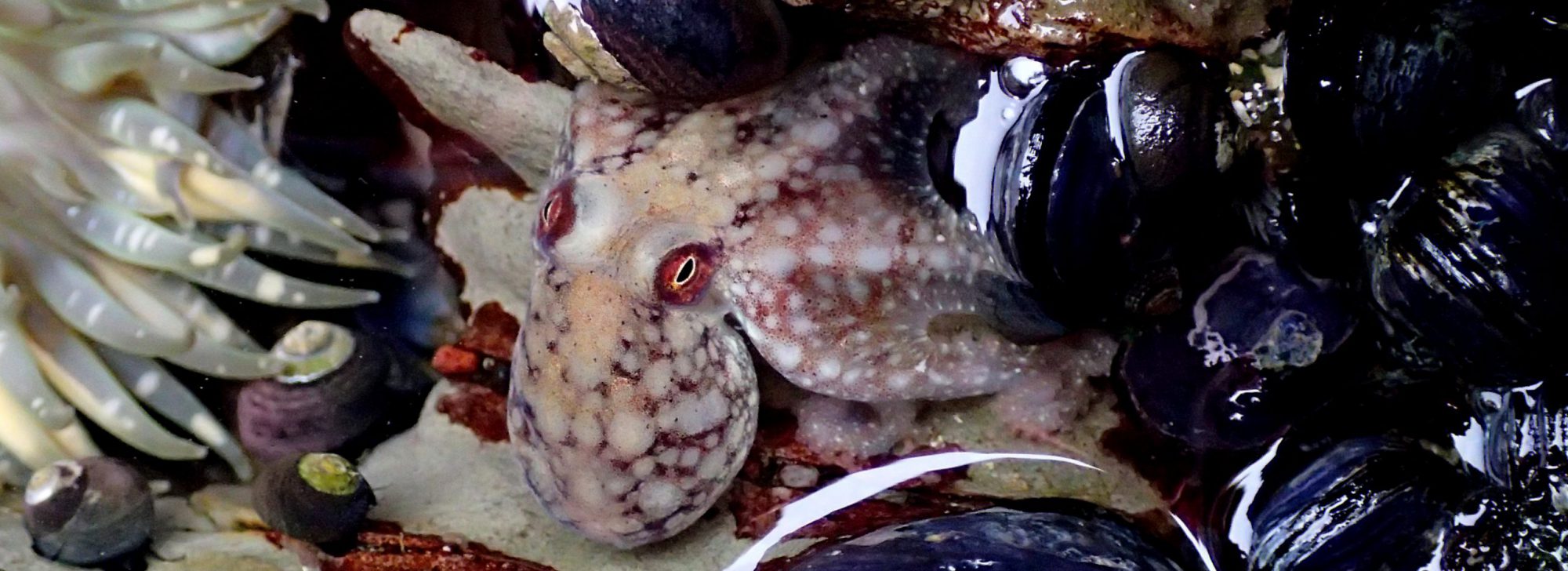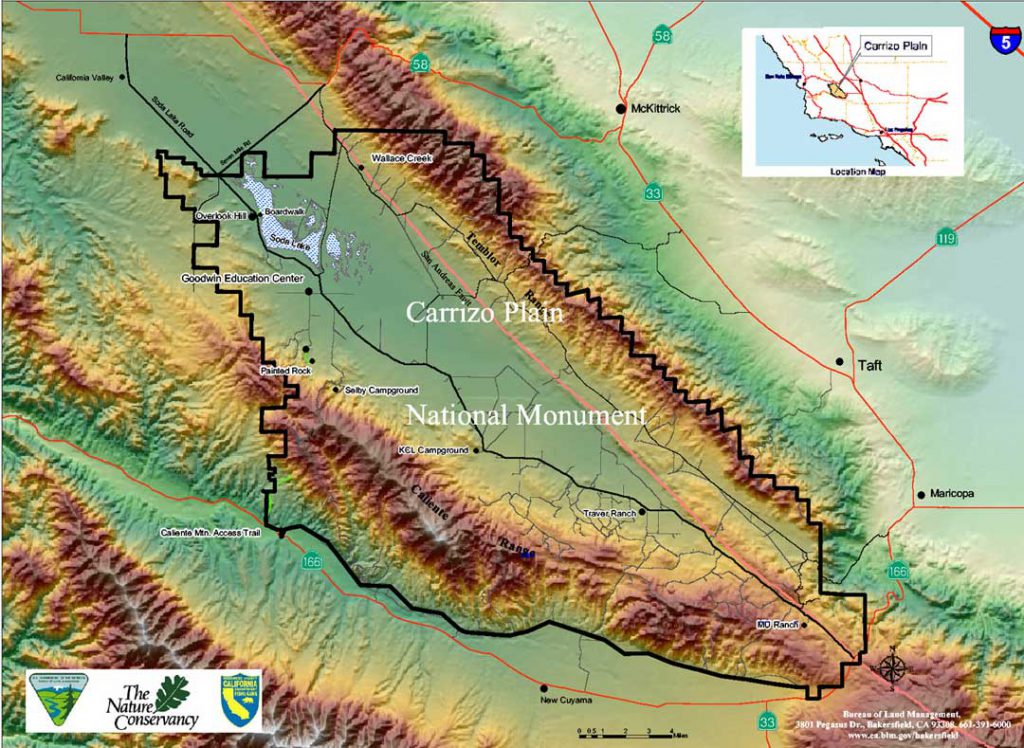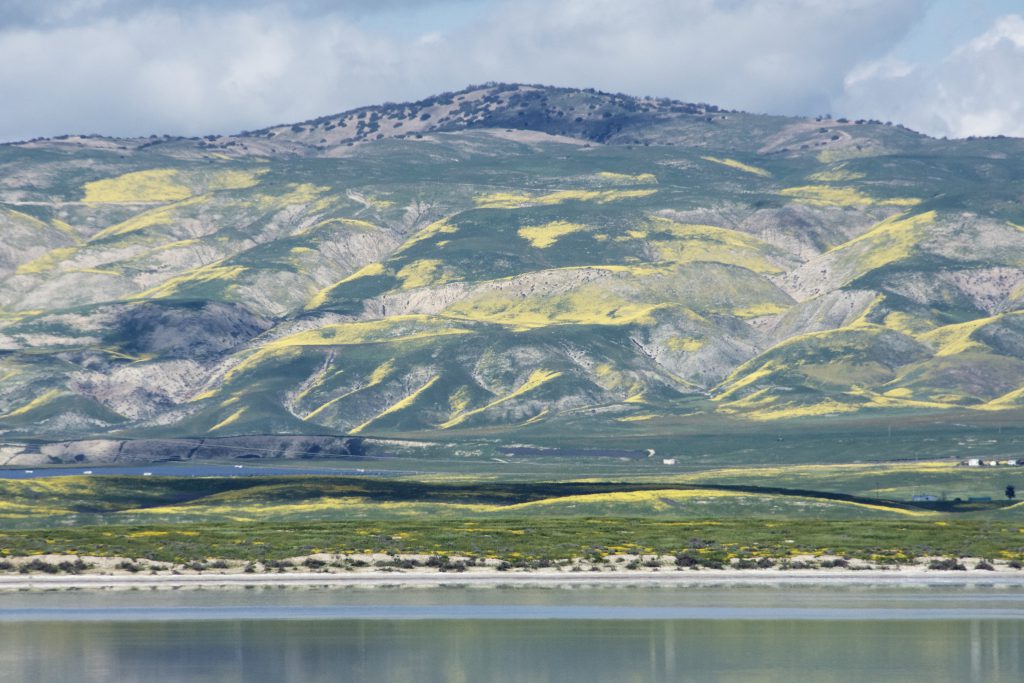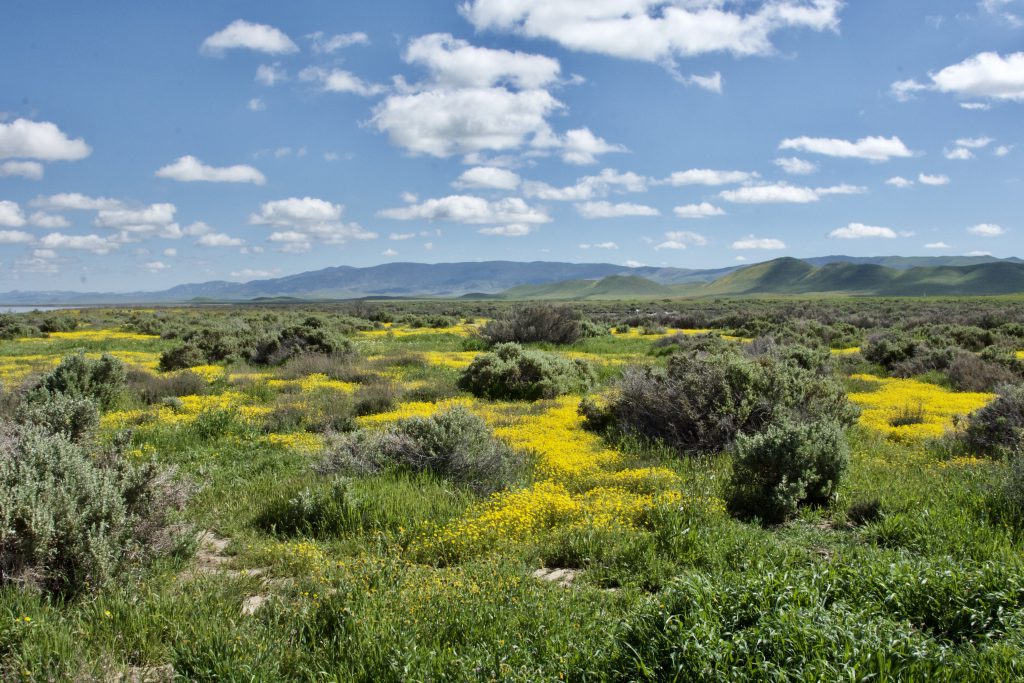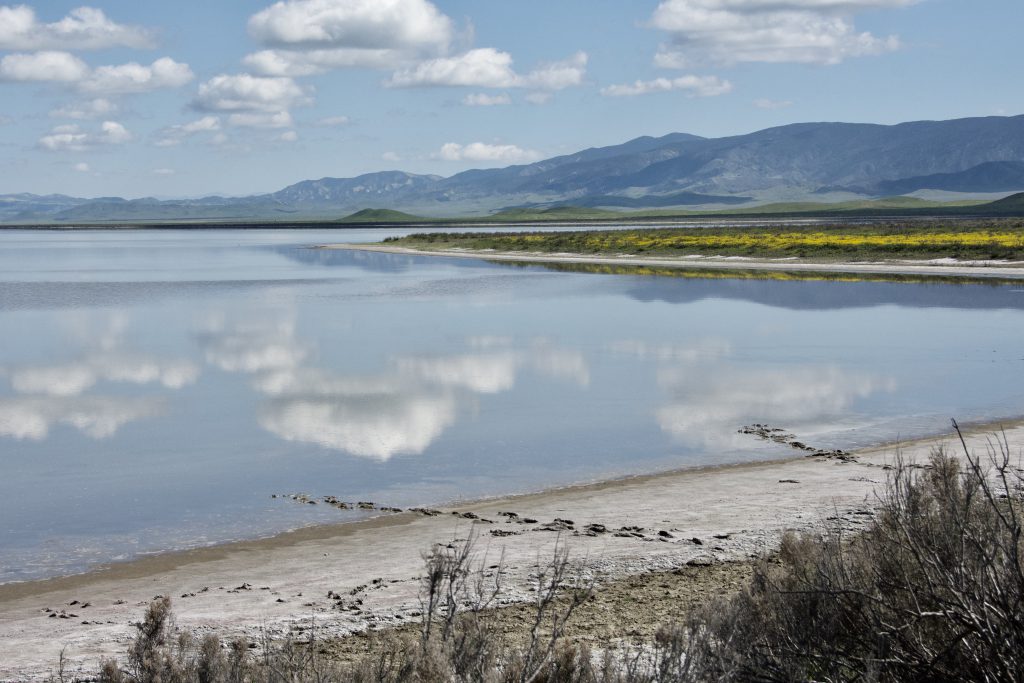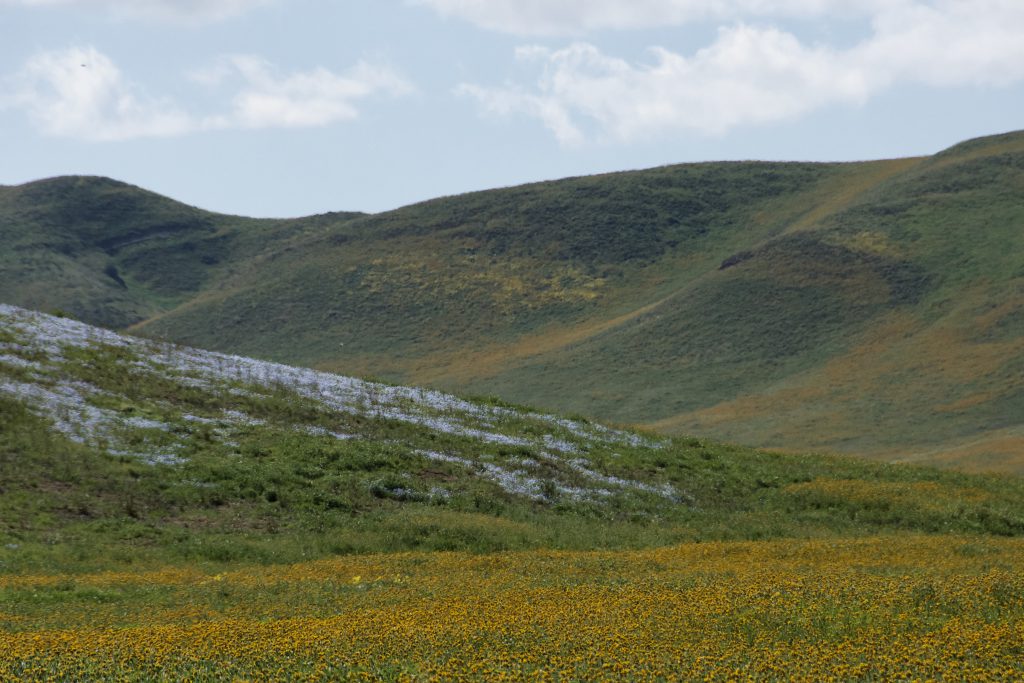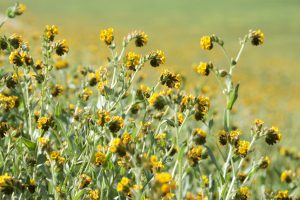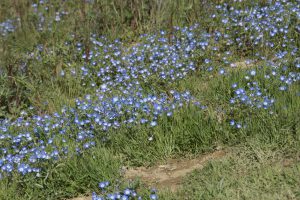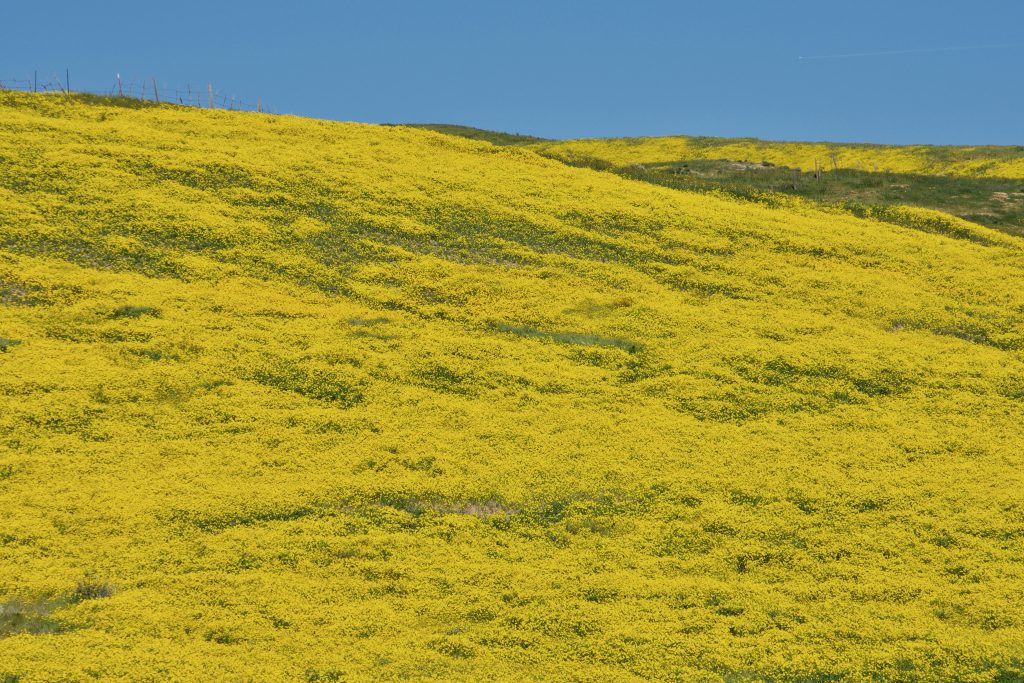Day 1 (Thursday 23 March 2017) cont’d.: Carrizo Plain National Monument
The Carrizo Plain is an enclosed grassy plain in the southernmost “toe” of San Luis Obispo County, lying between the Temblor Range to the northeast and the Caliente Range to the southwest. Its average elevation is about 700 meters (2200 feet). The main geological features of the plain are a seasonal lake that receives water from both mountain ranges, and the San Andreas Fault, which runs along the northeast edge of the plain up against the aptly named Temblor Range.
For most of the year the Carrizo Plain is hot, dry, and dusty. For a few weeks in the spring, especially if a decent amount of winter rain has fallen, the Plain explodes with color. As in most of the state the dominant color of the flowers is yellow, and the goldfields (Lasthenia californica) grow in huge swaths. Although it is always fun to focus on individual flowers, which I will do later, at the Carrizo Plain the focus is on the landscape.
Soda Lake Road bisects the Carrizo Plain and passes through so many stunning vistas that it is hard to decide where to look. The eye travels from the side of the road, across Soda Lake, and up against the Temblor Range hills and sees amazing splotches of color. It’s quite a spectacular display of natural beauty. Well, there’s also the humongous solar farm at the northwest corner of the lake, but let’s pretend we don’t see it, shall we?
In only a few weeks the entire landscape will have transformed from this lush green and yellow to unrelenting dusty brown.
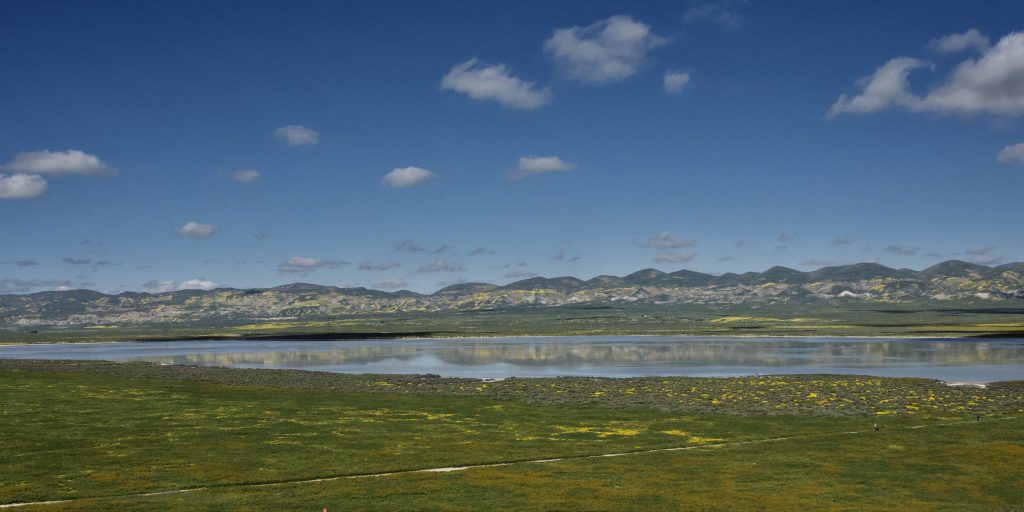
23 March 2017
© Allison J. Gong
And now let’s get up close and personal with some of the flowers. As mentioned above the goldfields were very common. I did not see any tidy tips on the Plain, although of course that doesn’t mean they weren’t there. One of the most abundant flowers on the Plain is fiddleneck (Amsinckia menziesii), which was just beginning to bloom.
In a couple of weeks the inflorescences will be longer and curled into the shape that gives them their common name, and the overall color of the landscape will shift from the brighter yellow of goldfields to a softer golden shade. Wherever the fiddlenecks occur they are extremely abundant. According to what I’ve read about this plant, later in the season its seeds will be a major food source for seed-eating birds such as finches and sparrows. I don’t remember seeing any finches when we were there, but we did see several white-crowned sparrows flitting about on the tops of the sagebrush.
Fortunately for the retinas of human visitors, the flowers were not all yellow. Along Shell Creek Road and at the Carrizo Plain there were two types of blue or purple flowers. The bluer of the two, baby blue eyes (Nemophila menziesii) occurred both in small patches on the flats and in big carpets on the hillsides. The bluish patch in the photo of fiddlenecks on the hills (up the page a bit) are all baby blue eyes.
The Great Valley phacelia (Phacelia ciliata) is a delicate, periwinkle-colored flower that contrasts beautifully with the golden orange of fiddlenecks. We saw it scattered here and there, and while it wasn’t uncommon it never seemed to occur in large patches in the Soda Lake area.
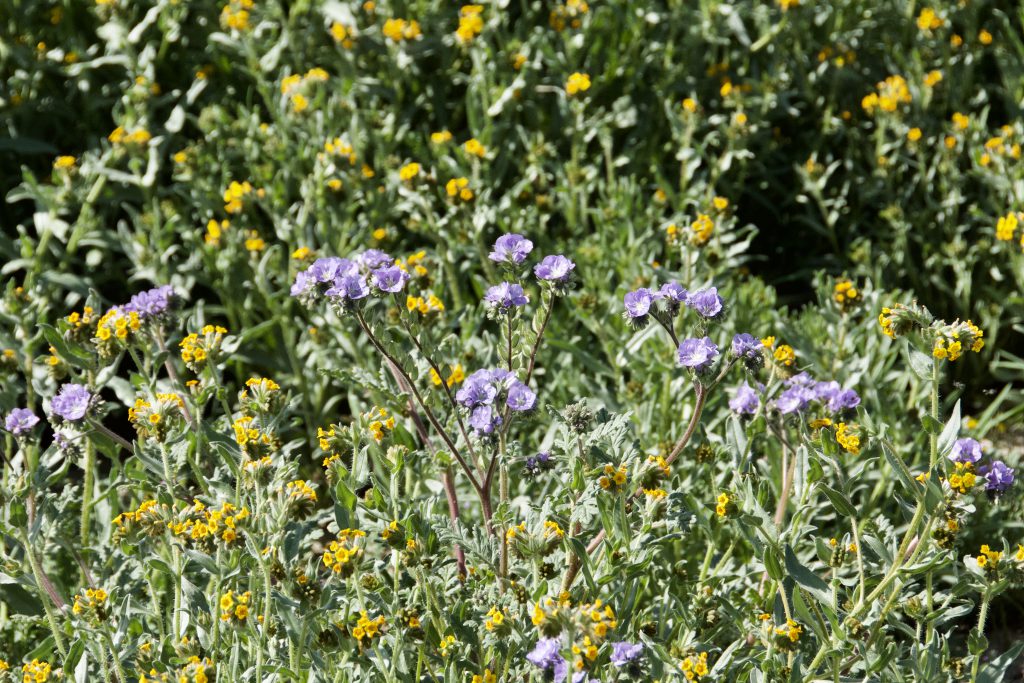
23 March 2017
© Allison J. Gong
Continuing along past Soda Lake we passed hillsides covered with brilliant yellow and purple flowers. In this area of the Carrizo Plain the phacelia did form larger patches, although they were still not as dense as either the fiddlenecks or the goldfields.
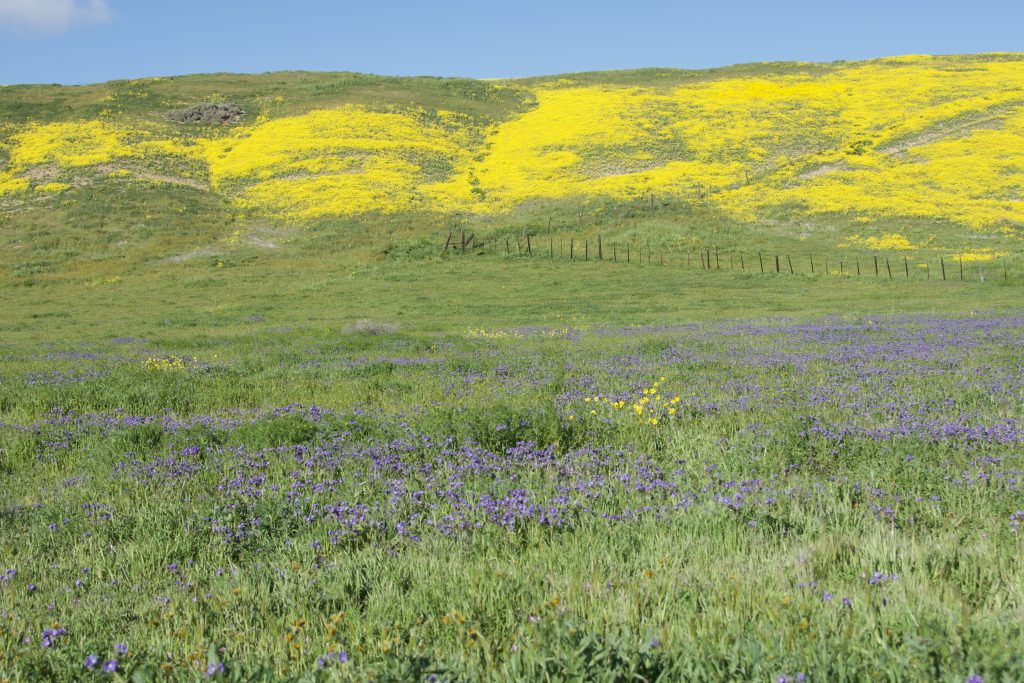
23 March 2017
© Allison J. Gong
And in case you think there might not have been enough yellow in the landscape: BAM!
Next installment: Antelope Valley and the Wind Wolves Preserve.
